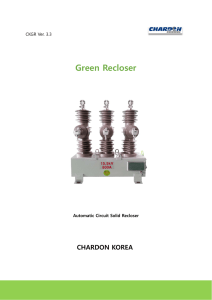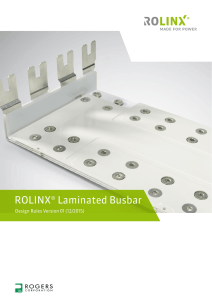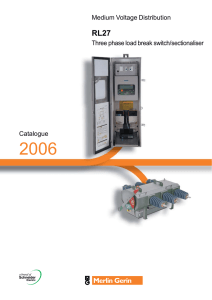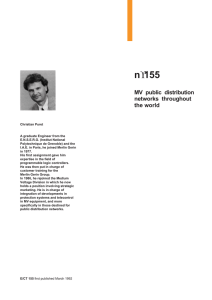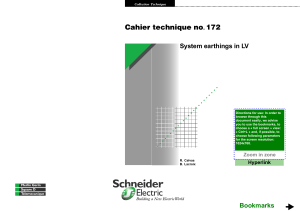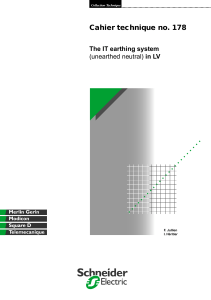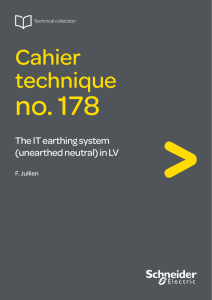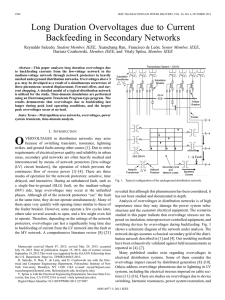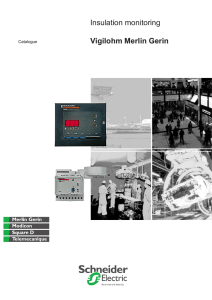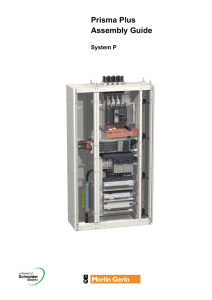Overvoltages – Case Study
advertisement
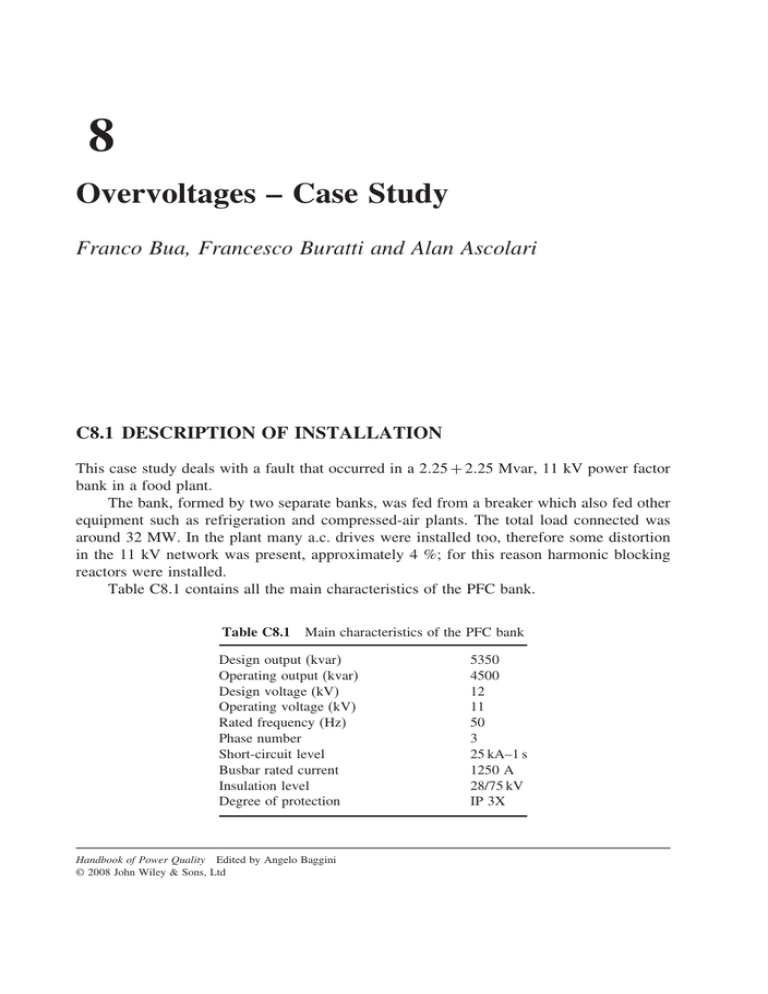
8 Overvoltages – Case Study Franco Bua, Francesco Buratti and Alan Ascolari C8.1 DESCRIPTION OF INSTALLATION This case study deals with a fault that occurred in a 225 + 225 Mvar, 11 kV power factor bank in a food plant. The bank, formed by two separate banks, was fed from a breaker which also fed other equipment such as refrigeration and compressed-air plants. The total load connected was around 32 MW. In the plant many a.c. drives were installed too, therefore some distortion in the 11 kV network was present, approximately 4 %; for this reason harmonic blocking reactors were installed. Table C8.1 contains all the main characteristics of the PFC bank. Table C8.1 Main characteristics of the PFC bank Design output (kvar) Operating output (kvar) Design voltage (kV) Operating voltage (kV) Rated frequency (Hz) Phase number Short-circuit level Busbar rated current Insulation level Degree of protection Handbook of Power Quality Edited by Angelo Baggini © 2008 John Wiley & Sons, Ltd 5350 4500 12 11 50 3 25 kA–1 s 1250 A 28/75 kV IP 3X G 56 C8.2 DESCRIPTION OF FAULT After some disturbances of increasing amplitude on the voltage measured on the 11 kV busbar (Figure C8.1), suddenly a transient occurred with catastrophic consequences and considerable arc damage resulted. As a consequence, all the fuses blew, the outside reactor coil expanded considerably due to the fault current and capacitors were destroyed. Figure C8.2 shows the transient disturbance measured on the 11 kV busbar at the moment of the fault. Figure C8.1 Disturbances measured on the 11 kV busbar before the fault Figure C8.2 Transient disturbances causing capacitor failure G 57 C8.3 APPARENT CAUSE The main problem in this case is the evaluation of what was causing the disturbances in the supply that caused the fault. A preliminary analysis of equipment behavior led to the conclusion that it is possible to exclude in a reasonable way the presence of any defect in the components: all the devices connected to the busbar had operated for months without any fault before two catastrophic events happened on the capacitor banks practically simultaneously. For this reason, the fault can be attributed only to external events and not to device breakdown. As described in Section 8.4.2.1, non-linearity of the voltage/current characteristics of a reactor can provoke ferroresonance phenomena in an LC circuit, so a small increase in the supply voltage can generate an big voltage increase on capacitor and reactor terminals resulting in damage or destruction. This situation was perfectly compatible with the events that occurred, because a sudden voltage increase could have instigated the ferroresonance phenomena and the consequent damage or destruction of the capacitors and reactors caused by a dielectric fault due to the high value that the voltage reached on the capacitor terminals. This could have then have provoked the electric arc which led to destruction of the fuses, due to the elevated voltage values. The fuses were in fact oversized, so their destruction could not have come from the short-circuit current. BIBLIOGRAPHY [1] De Metz-Nobla B., Lightning and HV electrical installations, Merlin Gerin, Cahier Technique No. 168, 1994. [2] Dugan R. C. et al., Electrical Power Systems Quality, McGraw-Hill, New York, 2002. [3] Faletti N., Chizzolini P., Trasmissione e distribuzione dell’energia elettrica, Vol. 1, Patron editore, Milan, 1985. [4] Fulchiron D., Overvoltages and insulation coordination in MV and HV, Merlin Gerin, Cahier Technique No. 151, 1995. [5] IEC 60071-1, Insulation co-ordination – Part 1: Definitions, principles and rules, Eighth Edition, 2006. [6] IEC 60071-2, Insulation co-ordination – Part 2: Application Guide, Third Edition, 1996. [7] IEC 60947-1, Low-voltage switchgear and controlgear – Part 1: General rules, Fifth Edition, 2007. [8] Seraudie C., LV surges and surge arresters, LV insulation co-ordination, Merlin Gerin, Cahier Technique No. 179, 1999. [9] UIE (International Union for Electricity Applications), Transient and temporary overvoltages and current, Paris, 2001.
